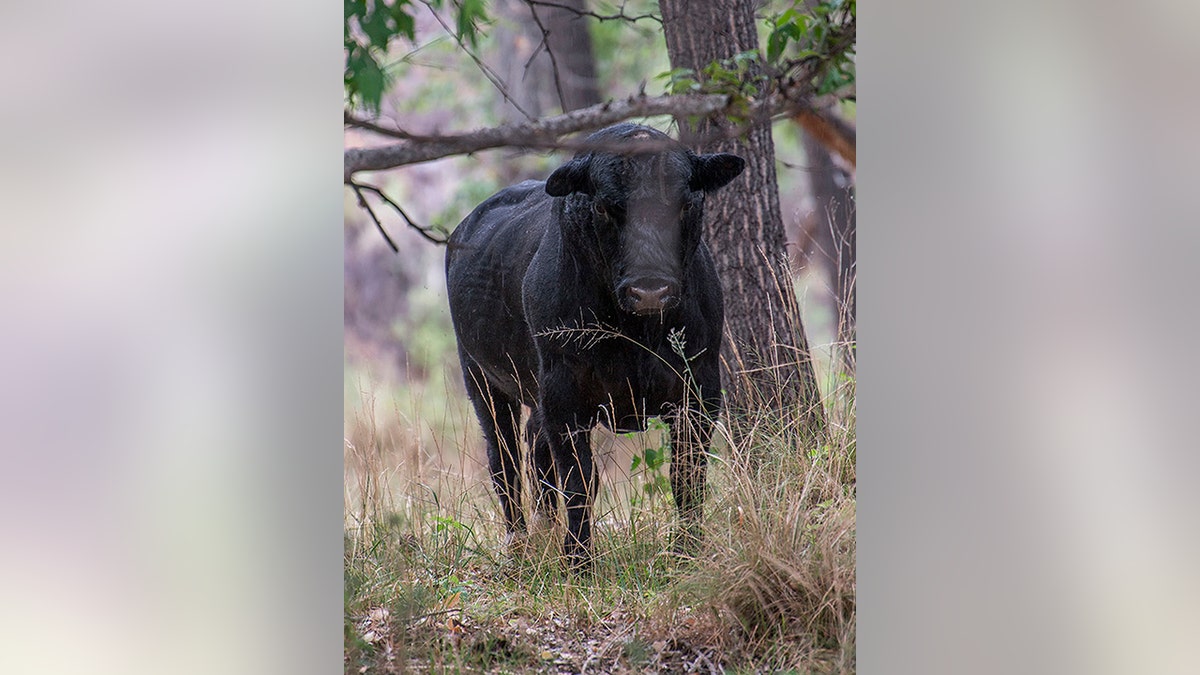Arizona city cuts off water supply to neighboring community amid drought
Rio Verde, Arizona, resident Cody Reim explains the 'plight' of his community as he fights to restore the water supply.
Officials have given a kill order to wildlife experts in southwestern New Mexico as part of an effort to eliminate feral cows in the Gila Wilderness.
The nearly 150 cows in the area have acted aggressively toward visitors and caused damage to sensitive areas in the nation's first designated wilderness area, officials said.
U.S. Forest Service managers approved the plan Thursday, which involves a helicopter with multiple shooters flying over the area in search of the stray livestock.
The move, which the Grant County Board of Commissioners approved and announced last month, has set the stage for legal challenges over how to deal with the over-grazing livestock in the drought-affected West.
CALIFORNIA STORMS NOT LINKED TO GLOBAL WARMING, SOME SCIENTISTS SAY

In this photo provided by Robin Silver, a feral bull is seen along the Gila River in the Gila Wilderness in southwestern New Mexico, on July 25, 2020. (Robin Silver/Center for Biological Diversity via AP)
The plan calls for a section of the Gila Wilderness to be closed to the public starting Monday, and a helicopter will launch Thursday. The shooters will then spend four days looking for feral cattle in rugged areas in and around the Gila River.
Forest Supervisor Camille Howes said the decision, amid pressure from environmental groups, was difficult but necessary.
"The feral cattle in the Gila Wilderness have been aggressive towards wilderness visitors, graze year-round, and trample stream banks and springs, causing erosion and sedimentation," she said.
Ranchers, however, opposed the decision and argued the plan to shoot cows from a helicopter should be regarded as animal cruelty. They said the action violates federal regulations and will result in a problematic situation in dealing with the left-behind carcasses.
Officials have argued scavenging birds, and other animals consumed the carcasses.
Ranching industry groups have also expressed concern the action could set a precedent across the West, especially as rural neighbors have vacated parcels because of worsening drought.
CO LAWMAKERS LOOK INTO ARTIFICIAL INTELLIGENCE TO IDENTIFY WILDFIRES EARLY
The New Mexico Cattle Growers’ Association estimates roughly 90 grazing parcels are vacant in New Mexico and Arizona as increased use of public lands — primarily for hunting and hiking — has resulted in knocked-down fences intended to keep cows in check.
Tom Paterson, chair of the association's wildlife committee, said the group has been unable to find a solution that wouldn't involve shooting the feral cows.

In this photo provided by Robin Silver, a feral bull is seen along the Gila River in the Gila Wilderness in southwestern New Mexico, on July 25, 2020. (Robin Silver/Center for Biological Diversity via AP)
He has pointed to a recent New Mexico Livestock Board directive that would allow neighboring permittees to gather and herd the cattle out, but access is limited with snow on the ground.
Paterson also said federal officials are not giving enough time to see if the directive will work.
"Easy is not an exception to their own rules. Frustration is not an exception to the rules," Paterson said. "Our society should be better than this. We can be more creative and do it a better way where you’re not wasting an economic resource."
FERAL COWS IN NM FACE REMOVAL FROM GILA NATIONAL FOREST
Todd Schulke, co-founder of the Center for Biological Diversity, and other environmentalists have applauded the Forest Service's decision.
"We can expect immediate results — clean water, a healthy river and restored wildlife habitat," he said.

GALLUP, NEW MEXICO - JUNE 07: A dry landscape stands on Navajo Nation lands on June 07, 2019 in the town of Gallup, New Mexico. (Spencer Platt/Getty Images)
While environmentalists have called for officials to avoid killing wildlife in other areas, the Center for Biological Diversity contends the situation in New Mexico is unique and will only worsen if feral cattle aren't removed.
CLICK HERE TO GET THE FOX NEWS APP
The livestock currently roams an area that spans more than 870 square miles (2,253 square kilometers) and is home to endangered Mexican gray wolves, elk, deer and other wildlife.
The operation will cover approximately 160 square miles (414 square kilometers).
Hundreds of unauthorized cattle have been removed over the years, including an operation last year that killed off 65 cows in an operation similar to the one planned for next week.
The Associated Press contributed to this report.






















